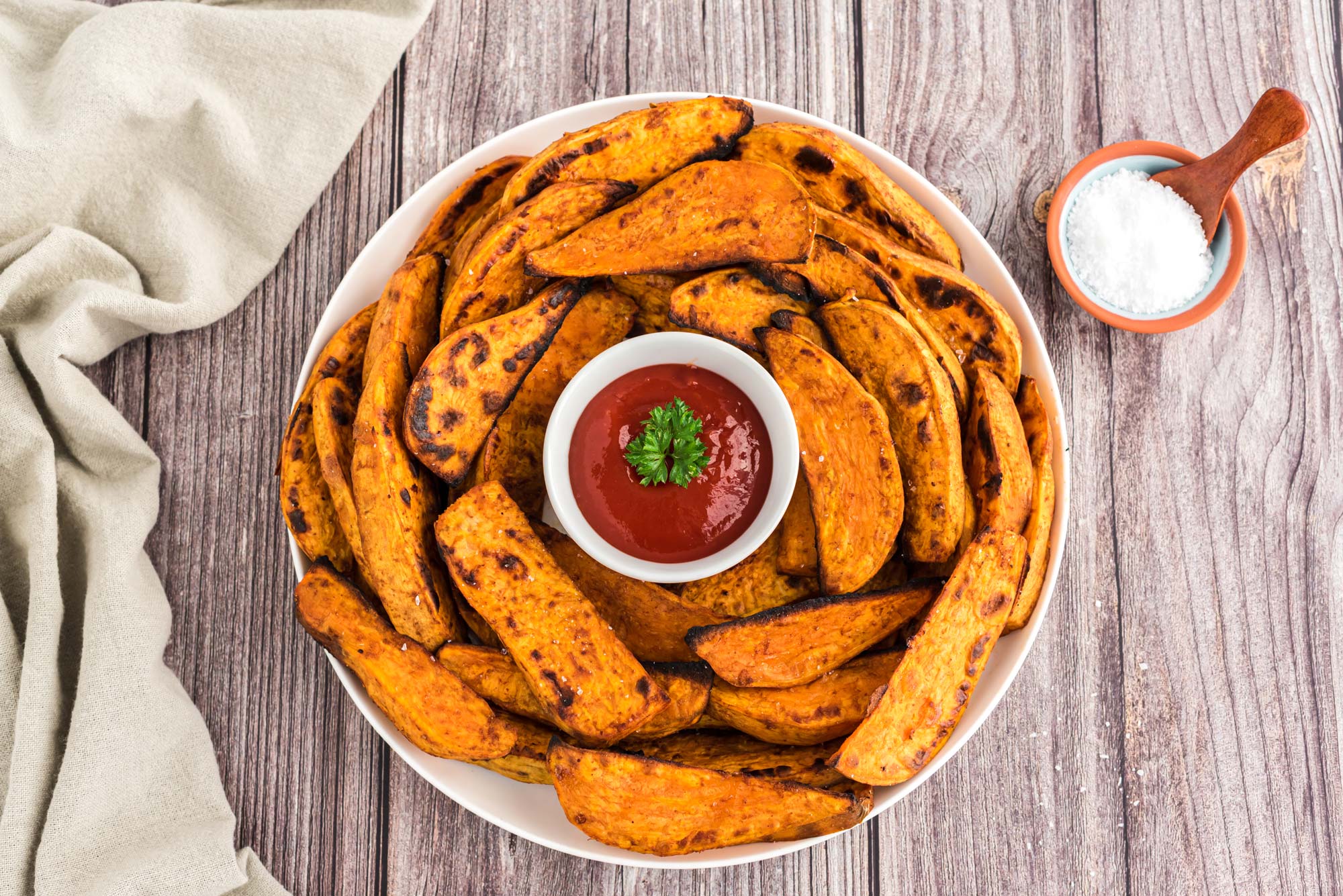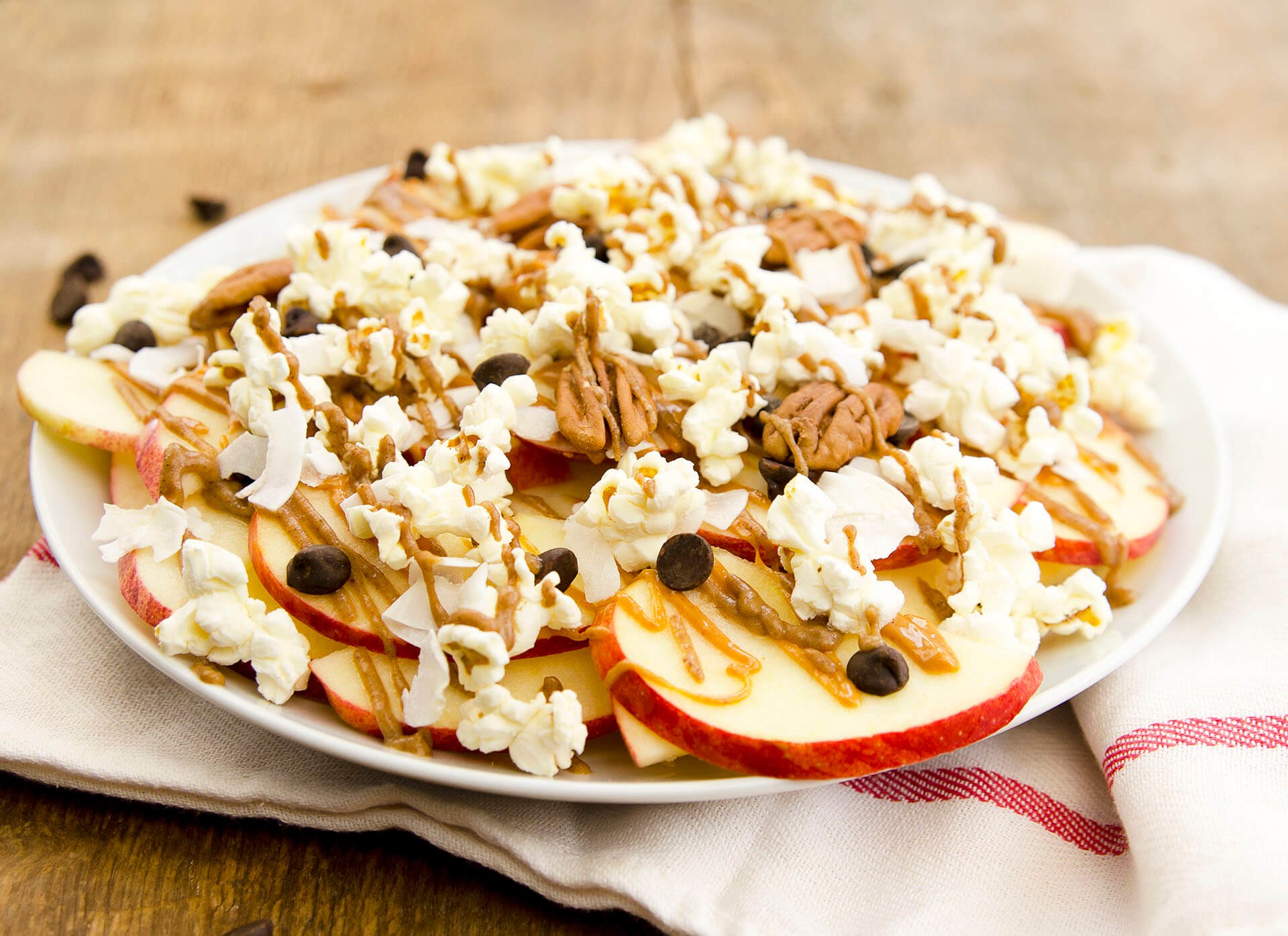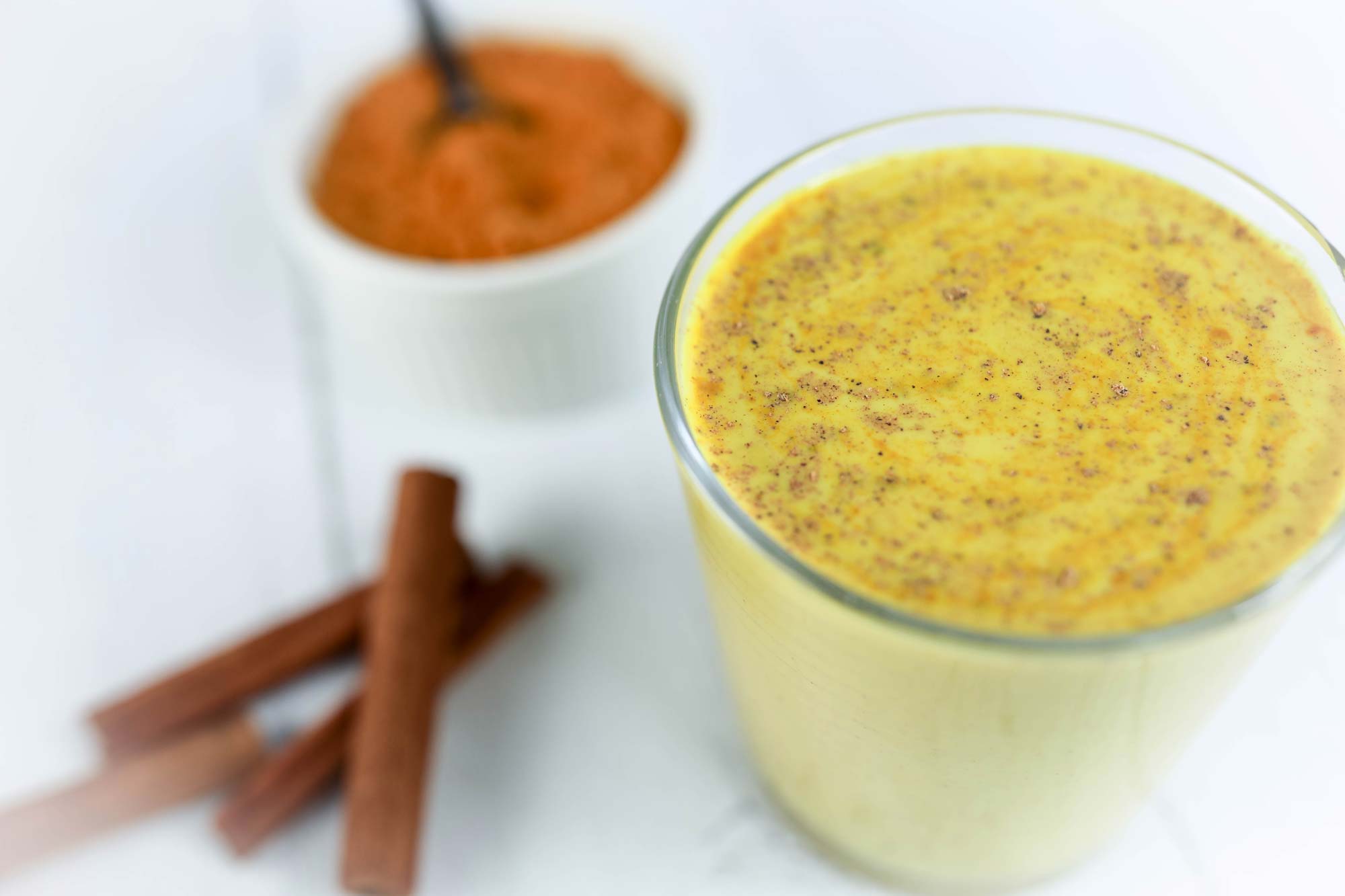If you Google “food you can eat with one hand,” you’ll see more than 2,000,000,000 results, pages with titles like “13 Dishes You Can Eat with One Hand” (TodaysParent.com), “Recipes People Can Literally Eat with One Hand” (TasteofHome.com), and “29 Healthy Meals You Can Literally Eat on the Go” (Greatist.com). I suspect that some of these articles are for people who have broken their arms or are for some other reason limited to single-handed eating. But the vast majority of the audience for this topic is composed of busy people who can’t or won’t find time to sit down to eat. The Greatist.com article begins, “When your days are packed with meetings, appointments, errands, and social time, sometimes the only chance to eat is when you’re on the go.”
And by “on the go,” they might be speaking literally. According to a survey on drivers’ eating habits by Insure.com, the best foods to eat while driving are, in order of preference, candy bars, French fries, potato chips, chicken nuggets, and donuts. And a statistic floating around the internet, attributed to author Michael Pollan, states that 20% of all meals in the US are eaten in a car.
Mindless Eating

We don’t have to be “on the go” to eat while doing other things, however. What’s called “mindless eating” has become the default for many of us these days. How many of us eat lunch at our desks? How often are we too busy to pause what else we’re doing while we eat?
The company that makes Pretzel Crisps conducted a survey in 2019. It found that almost 9 out of 10 Americans regularly dine while looking at an electronic screen.
If you can relate to any of this, you’re certainly not alone. The hectic pace of modern life impacts all of us. Sometimes it can feel like you have to multi-task just to keep up.
Our culture has shifted from “three meals a day” to “all food, all the time.” And never before has food been so readily available: co-workers routinely bring donuts and other sweets to work. In towns around the world, you can find junk food for sale on every corner. Convenience stores and gas stations offer an abundance of easy-to-eat, “one-handed,” packaged and fast food. And in many downtown areas, food trucks peddle greasy and unhealthy takeout dishes to hurried workers and students.
And it goes even further when eating meets entertainment. What movie theater would be complete without audiences eating popcorn drenched in butter while gasping and shrieking at the latest thriller? And what sports stadium doesn’t offer hot dogs, tacos, cheese fries, and local specialties like deep-fried PB&J on a stick, a staple of the Buffalo Bill’s New Era Field in New York.
Disconnected From Our Food
It’s not just that the food itself is often unhealthy. Sadly, if we bring little awareness, we are unlikely to find lasting satisfaction or nourishment. When we eat while focused on other things, it’s more difficult to feel a connection to the sources of that food — where it came from, what’s in it, how it got to us, whose labor contributed to its production and distribution. And it’s also harder to pay attention to how our food makes us feel while we’re eating it. Only later, after indulging, might we notice nausea, bloating, gas, lethargy, fogginess, and the other myriad maladies caused by overeating stuff that isn’t really even food, but actually manufactured food-like substances.
That’s a pretty grim picture. It reminds me of the movie Wall-E, in which sedentary, obese humans who have lost the ability to walk, float around on antigravity deck chairs, and mindlessly consume “lunch in a cup” while watching screens advertise all manner of consumption. But luckily, there are many ways to reconnect with our food, choose healthier options, and enjoy them more. And one of them is mindful eating.
What is Mindful Eating?

Mindfulness is a practice inspired by the contemplative practices of many schools and faiths, including Christianity. It involves bringing attention and awareness to what you are doing in the here and now. Anything can be the subject of mindful contemplation, including your breath, physical sensations, an object in the environment (such as a candle flame, or a tree), a mantra (repeated word or phrase), or in the case of mindful eating, all the sensations related to the food that’s in front of (and inside of) you. Studies have shown that mindfulness can lead to better focus, less stress, and lower rates of depression.
Bringing mindfulness to eating can confer all these benefits — and more. When you bring awareness to the act of eating, you become more conscious of what you are putting into your body — and how your body is responding to it. Mindful eating allows you to pay attention to your body’s hunger and satiety signals and allows you to filter out the emotional “noise” that can be mistaken for hunger: boredom, sadness, anger, and even excitement. When you consciously direct your attention to your food, it allows you to reconnect with your senses of taste, smell, and touch, allowing you to enjoy the food in a much more fulfilling and complete way. And rather than being disconnected from your dining partners, each lost in their own screen, you can create connections with others through breaking bread together.
Mindful eating is also a powerful entry point in addressing your emotional “baggage” around food: guilt about particular foods, anxiety about not getting enough, and strong likes and dislikes that may be colored by past experiences more than current realities. By staying present, you are better able to recognize these emotional reactions without judgment, and thus begin to free yourself from the compulsion to act on them.
Benefits of Mindful Eating

Are the benefits conferred by mindful eating backed by science? You bet they are!
Can Help With Weight Loss
Paying attention to the experience of eating has been shown to help obese people avoid overeating and lose excess weight. A review of mindful eating studies showed that the process undermined three of the most powerful forces compelling people to eat when they aren’t hungry: the urge to binge; eating for emotional reasons; and eating based on external cues. Being mindful helps people to heed their body’s genuine signals and avoid giving in to temporary cravings that aren’t rooted in nutritional needs.
May Help With Treatment of Eating Disorders
Mindfulness interventions have also been used to treat eating disorders, and binge eating, in particular. In addition to the increased awareness of physical sensations and psychological triggers, mindfulness often increases self-acceptance and dilutes the voice of the “inner critic” that so often triggers a desire to self-medicate with junk or comfort foods. Since mindful eating involves, by definition, focusing on your food rather than splitting your attention between eating and other stimuli, this practice can also reduce the kind of “emotional band-aid” eating that often occurs when we’re simultaneously watching TV or engaging on social media.
May Increase Enjoyment and Gratitude
Being mindful of the food you’re eating while you’re eating it can also increase your appreciation of that food: its aromas, flavors, and textures are more present to your brain and so register more strongly. Eating mindfully evokes and strengthens your gratitude muscle. Paying attention to the food and the process of eating enhances appreciation for where the food came from, all the people whose labor brought it to you (farmworkers, logistics engineers, drivers, refrigeration mechanics, marketers, retailers, packagers, chefs — the list is almost endless), and the good it can do in your body. When you really think about it, eating is a pretty magical activity; the primary way you and the rest of reality are connected. When you eat, you’re basically turning some portion of the outside world into you. That’s a lot to be grateful for!
May Make it Easier to Make Wise Food Choices
People who have learned to eat mindfully often report that their food preferences change in the direction of health. Mindful eating makes it easier to choose healthy foods, and avoid unhealthier ones. One study found that adding mindfulness training to a diet and exercise program for obese adults reduced self-reported consumption of sweets, a measure that was supported by a reduction in fasting blood glucose in the experimental group at six months, compared to a control group. While all the mechanisms by which mindful eating changes eating behaviors are not fully understood, one pathway appears to be by reducing the person’s reactivity to external food cues. That is, someone practicing mindfulness can insert a space large enough for free will between “see cookie” and “eat cookie.”
Good for Digestion
When you slow down and pay attention to your food, your body digests that food more efficiently. By savoring your food, including smelling, chewing, and letting saliva build up, you’re supercharging your digestion to more efficiently process that food and absorb its nutrients. The process of digestion actually begins before you start eating, as Pavlov’s dogs could have told you. They salivated at the bell in anticipation of chow. When we take time before eating to notice the food in front of us, we also jumpstart the digestive process by bringing more digestive enzymes into our saliva.
Provides Useful Information
When you eat mindfully, you’ll be collecting lots of useful data that you can use to optimize your eating and your life. If you don’t pay attention to what you’re eating, how you’re eating it, and when, you’ll never make connections between food and mood, eating and energy, and other important patterns. Eating mindfully for even a few days can start giving you valuable clues about how to best eat to fuel your work, play, and exercise. You may discover your eating habits changing, and notice that certain foods leave you feeling light and energetic, while others leave you feeling heavy, hungry, or even with a tummyache.
Emotional & Mindless Eating

The flip side of mindful eating is mindless eating. When you aren’t bringing consciousness or attention to your relationship with food, you’re more likely to eat on autopilot. And in a toxic food culture, that usually leads to some pretty unhealthy choices.
Mindless eating often opens the door wide to its close relative, emotional eating, which involves using food to fill emotional needs, rather than nutritional ones. While all of us use food to make ourselves feel better on occasion, when emotional eating becomes the default (and often only) way we can tend to our feelings, we lose the ability to recognize and address genuine psychological needs.
Stress eating is a good example. Unless the sole cause of your stress is physical hunger, eating will not resolve the stress. Worry, upset, anger, loneliness, exhaustion, and boredom can feel intolerable. And most of us learn quite early in life that ice cream and cookies and fries can distract us from those feelings, at least for a short while. If that becomes your go-to strategy, however, you’ll almost certainly overeat. Because you’ll need to keep stimulating your taste buds to override the unwanted emotional state — regardless of whether you’re hungry or not.
Emotional eating not only leads you to make poor food choices, and overeat on those choices, it also prevents you from recognizing and tending to your true needs. And ironically, it may actually make the problems worse. If you’ve ever eaten for emotional reasons, felt remorse for what and how much you ate, and then started beating yourself up for messing up and not having more willpower, you’re familiar with that vicious cycle. The more you overeat, the worse you feel. The worse you feel, the stronger the urge to self-medicate with more junk food. Eventually, this can even spiral into anxiety and depression.
Strategies to Move Away From Mindless Eating

Is there a way out from the grip of mindless, emotional eating? The answer, fortunately, is yes. One way is to proactively identify other strategies to change your mood and your state — and commit to practicing them. Here are a few examples:
- If you’re depressed or lonely, call someone who often makes you feel better, play with your dog or cat, or look at a favorite photo or cherished memento.
- If you’re anxious, expend your nervous energy by dancing to your favorite song, squeezing a stress ball, or taking a brisk walk.
- Exhausted? Treat yourself to a hot cup of tea, take a bath, light some scented candles, or wrap yourself in a warm blanket.
- If you’re bored, read a good book, watch a comedy show, explore the outdoors, or turn to an activity you enjoy (woodworking, playing the guitar, crocheting, scrapbooking, etc.).
- And if you do decide to eat, commit to begin eating mindfully, savoring the aromas, flavors, and textures of whatever you’re eating. By paying full attention to the experience, you may discover that you don’t need to eat nearly as much as you thought you did to start feeling better.
How to Be More Mindful When You Eat

It’s easy to say “be mindful.” But the problem with that is, you kind of have to be mindful to remember to be mindful. Especially when the behavior is eating, which as we’ve seen is often an automatic process triggered by cues outside of our conscious awareness. One way to escape this trap is to create habits and rituals around eating that you commit to, so they become the new defaults.
Gratitude
One such ritual that has stood the test of time in many cultures is a gratitude prayer or blessing at the beginning of a meal. Just taking a few seconds to acknowledge appreciation for the food and the many hands that make it possible can reduce cravings, alleviate stress, and bring your attention to the qualities of the food in front of you. If you’re with others, you can take a few moments to “say grace” together.
Tune In to Your Body
Another useful habit to deploy before eating is to get in touch with your body. Take a moment to notice your posture, your breathing, your emotional state, and your energy level. Now bring that body awareness into your mouth, and direct it toward the process of chewing and swallowing. Use all your senses. Practicing this will help you identify foods that serve your physical body — and those that undermine its functioning.
Commit to eating slowly and chewing your food thoroughly. Since your main “I’m full — stop eating” signal comes from stretch receptors in your stomach, if you’re eating a mile a minute, you can still feel hungry after consuming way more food than your stomach can comfortably hold. By the time your stomach starts registering fullness, you might actually be really uncomfortable. Instead, eating slowly allows you to recognize and act on satiety signals in a timely manner, thus avoiding overeating.
Turn Off & Put Away Distractions
Make a rule to turn off and put away potential distractions during meal times. Avoid TV, your cellphone, laptops, tablets, and newspapers while you’re eating. If you usually eat on the sofa in front of the TV, how would it feel to switch locations to reduce the pull of conditioned habit?
Take Stock of Triggers
Finally, use the space you create by eating slowly and mindfully to notice your motivations for eating. Ask yourself: “Why am I choosing to eat at this moment?” You may discover that you’re bored, or feeling another emotion or physical state you want to move away from. You may realize that some external cue triggered you: the time, the location, a particular aroma. Perhaps you’re actually not hungry, but thirsty. Take stock, and you’ll soon get better at distinguishing true hunger from all the other reasons you might eat.
Recipes to Enhance Your Experience
Now, it’s time to practice being present with a variety of meals and snacks (yes, snacks can be mindful). Start with a mindful morning as you make and enjoy your flavorful and satisfying Breakfast Burrito. Appreciate the naturally sweet and savory (and oil-free!) Balsamic-Glazed Sweet Potato Fries. Have fun snacking on the crunchy, loaded Apple Nachos Supreme. Use all of your senses as you travel on a tasting journey with the Raw Chocolate Orange Pudding. And, sip, savor, and feel the warmth of the Turmeric Milk as the healing spices soothe your body. Finally, take some deep, long breaths in between meals and send gratitude to all of the ingredients that made your meals delicious and healthful.
1. Breakfast Burritos

Many of us eat breakfast on-the-go, as we’re preparing the kids for school, getting ready for work, or squeezing it in before or after exercise. Use this nourishing and flavorful tofu burrito to practice presence and mindfulness with every step — from cutting the vegetables to cooking the potatoes to assembling the burrito. Then, sit down to eat it, savoring each bite. Eat slowly, and notice if you get full faster than usual because you’re taking your time. You just might have leftovers for lunch!
2. Balsamic-Glazed Sweet Potato Fries

You can easily snack mindfully when you skip the fried and processed foods and enjoy nutrient-dense, whole plant-foods instead. These oil-free Balsamic-Glazed Sweet Potato Fries shine on their own with their natural sweetness and perfectly baked texture. They make a great companion for your favorite veggie burger, too!
3. Apple Nachos Supreme

If you love snacking on sweet and crunchy then this may be your future go-to snack of choice. And this sweet and crunchy snack won’t leave you wanting more. By taking your time and noticing each crunch while savoring the natural sweetness, you’ll allow the fiber in the apples and popcorn to fill you up before you’re ready for a second helping. That’s what we call healthy, smart, and mindful snacking.
4. Raw Chocolate Orange Pudding

Have you ever tasted chocolate using all of your senses? The flavor seems to increase exponentially when you do! Here’s how: Starting with your eyes, notice the deep, rich chocolate-y color of the pudding. Moving to your nose, smell the aroma of pure cacao (close your eyes while doing this to make the experience even more delightful). Then, taste the pudding by letting the chocolate dissolve in your mouth while feeling the silky soft texture of the avocado. Finally, reflect on your sensory experience, and try it with other foods you love!
5. Turmeric Milk

The experience of making turmeric tea can be mindful in and of itself. As you add each spice, notice the beautiful colors, the subtle aromas, and the color they form as they blend together. Before you sip, close your eyes and take three deep long breaths, counting to five as you inhale and counting to five as you exhale. Now, sip, savor, and feel the warmth of the healing nutrients as they move through you.
Eat Mindfully

When you bring consciousness and care to any relationship, it becomes richer and more meaningful. And this includes your relationship with food! Slowing down and paying attention with mindful eating doesn’t just change how you eat. It might also change what kinds of foods you’re drawn to. Your body has tremendous wisdom. And sometimes, if you slow down a bit, you become better able to heed it.
Tell us in the comments:
- How often do you find yourself eating mindlessly? What’s the cost to your health and happiness?
- Do you have any favorite mindful eating habits or practices?
- Are there any new strategies you want to try, after reading this article?
Feature image: iStock.com/RuslanDashinsky




